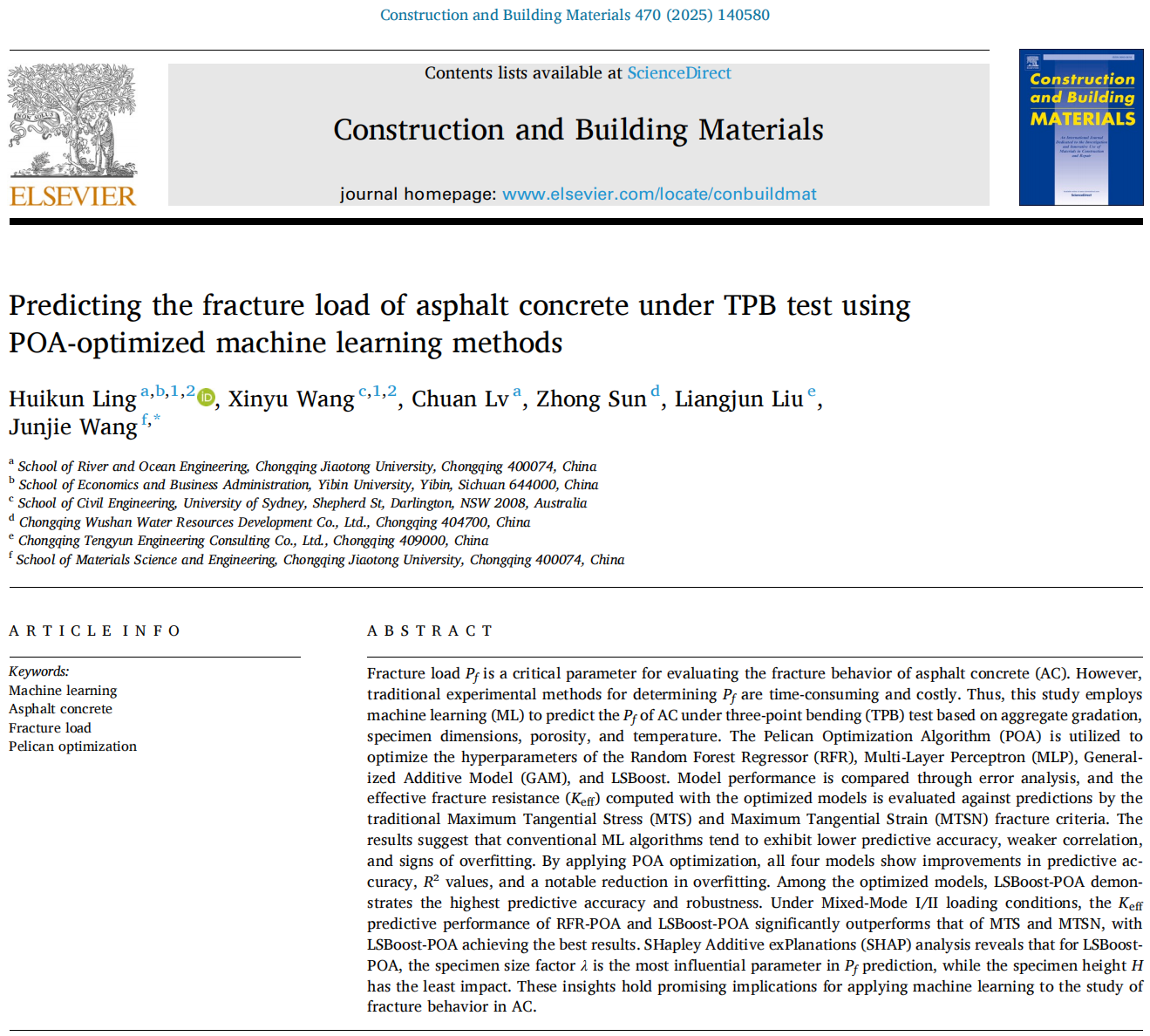The rapid evolution of deep learning and machine learning technologies is catalyzing a paradigm shift in materials science research, fostering the emergence of intelligent and computationally efficient methodologies. A recent breakthrough in this interdisciplinary domain was achieved by a research team led by Professor Wang Junjie from the School of Materials Science and Engineering. Their paper titled “Predicting the Fracture Load of Asphalt Concrete under TPB Test Using POA-Optimized Machine Learning Methods” was published in the renowned journal Construction and Building Materials. The study successfully integrates machine learning with optimization algorithms, offering an innovative solution for predicting the fracture performance of asphalt concrete, which marks a significant step forward in the field of intelligent material analysis.
Construction and Building Materials is a Top-tier journal in the Chinese Academy of Sciences (CAS) Q1 category, boasting an impact factor of 7.4. Meanwhile, the research was supported by funding from the Chongqing Water Resources Science and Technology Project and the National Natural Science Foundation of China.

Asphalt concrete (AC) is a material that is widely used in road surface pavements and embankment dam cores, due to its superior fracture resistance which ensures normal operation and safety. This research employs machine learning (ML) to predict the Pf of AC under three-point bending (TPB) test based on aggregate gradation, specimen dimensions, porosity, and temperature. The Pelican Optimization Algorithm (POA) is utilized to optimize the hyperparameters of the Random Forest Regressor (RFR), Multi-Layer Perceptron (MLP), Generalized Additive Model (GAM), and LSBoost. Furthermore, the SHAP analysis was conducted to interpret the response mechanism of input parameters in the ML models.

The paper innovatively proposes a “Machine Learning + Fracture Mechanics” integrated framework, indicating that the effective fracture resistance (Keff) predictive performance significantly outperforms that of MTS and MTSN. These insights hold promising implications for applying machine learning to the study of fracture behavior in AC. As the global materials research community increasingly embraces artificial intelligence, this study offers fresh insights into the performance prediction of asphalt concrete. It also paves the way for intelligent maintenance and operation of infrastructure such as roads and dams, marking a pivotal contribution to the field of smart infrastructure development.






 waiban@vip.163.com
waiban@vip.163.com